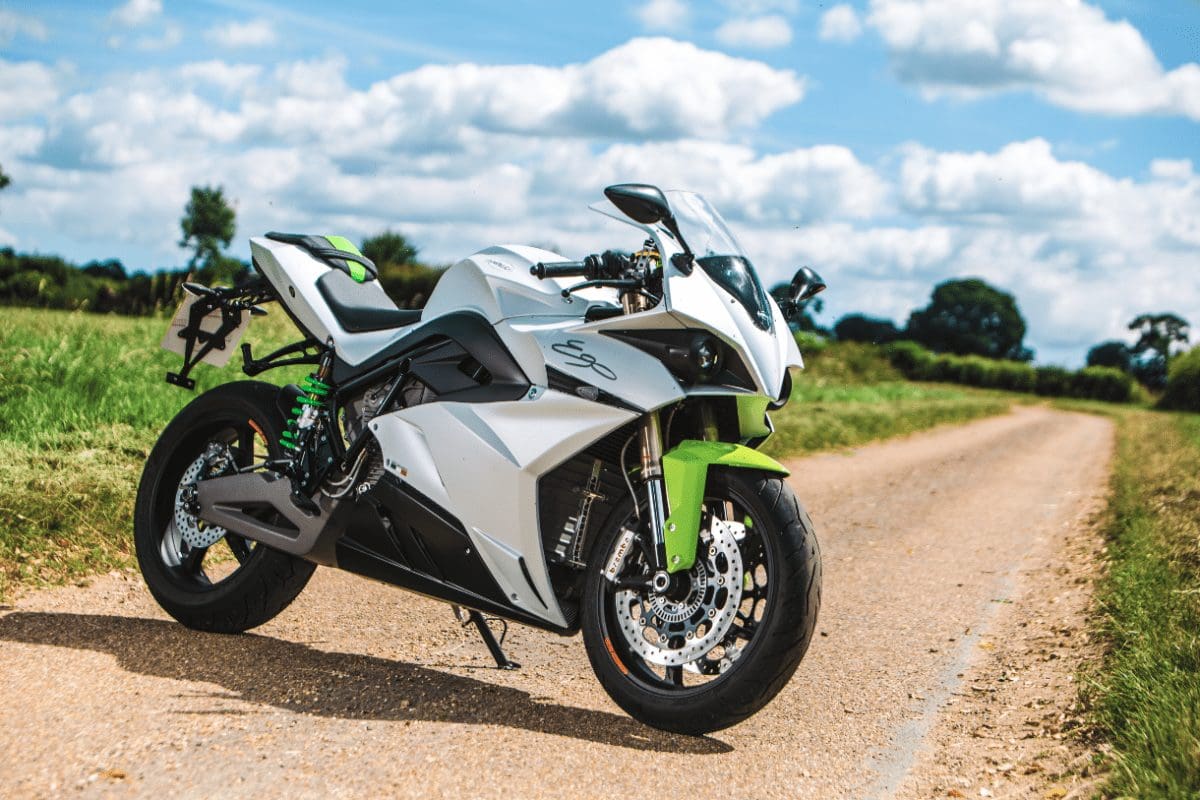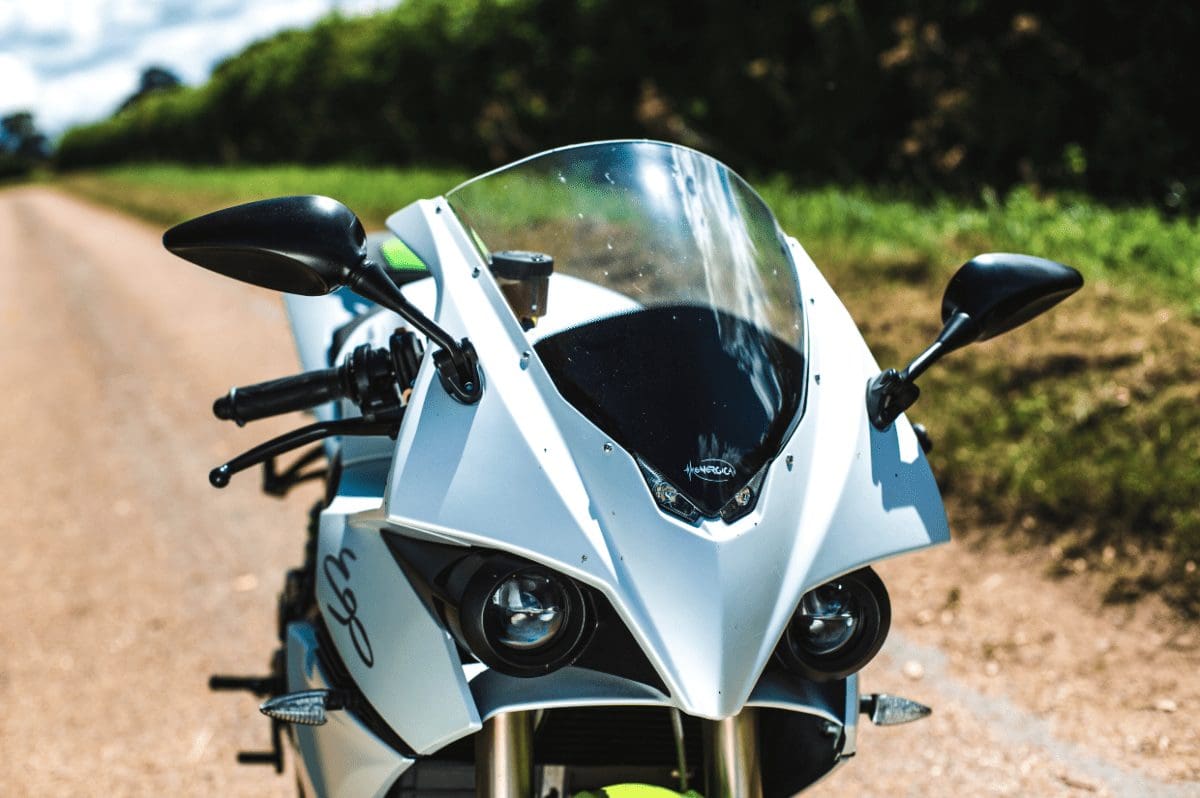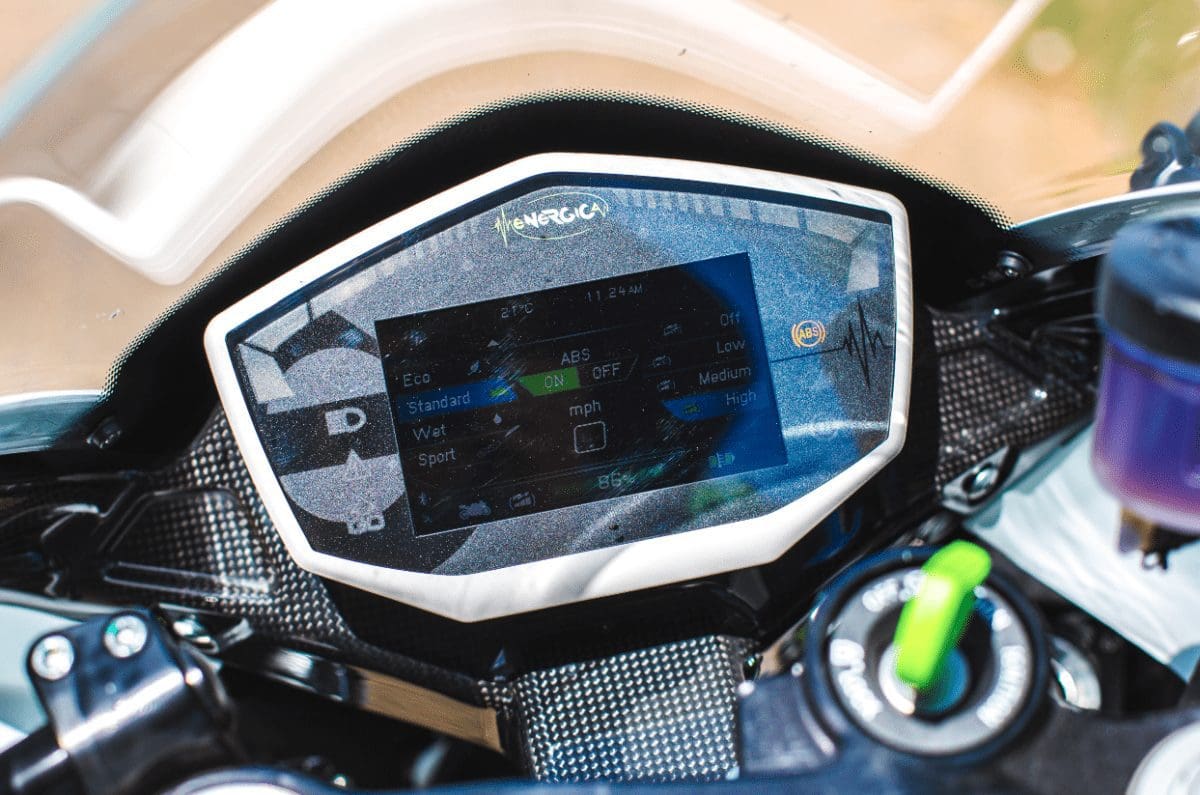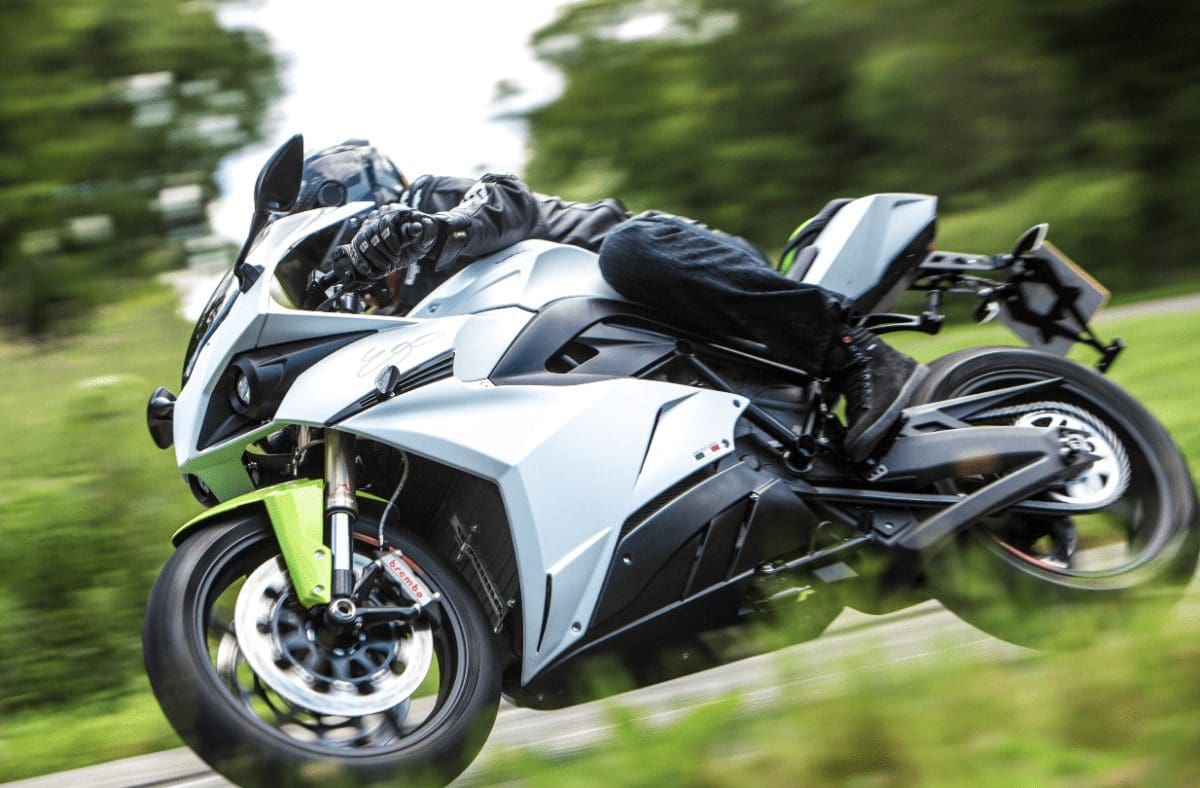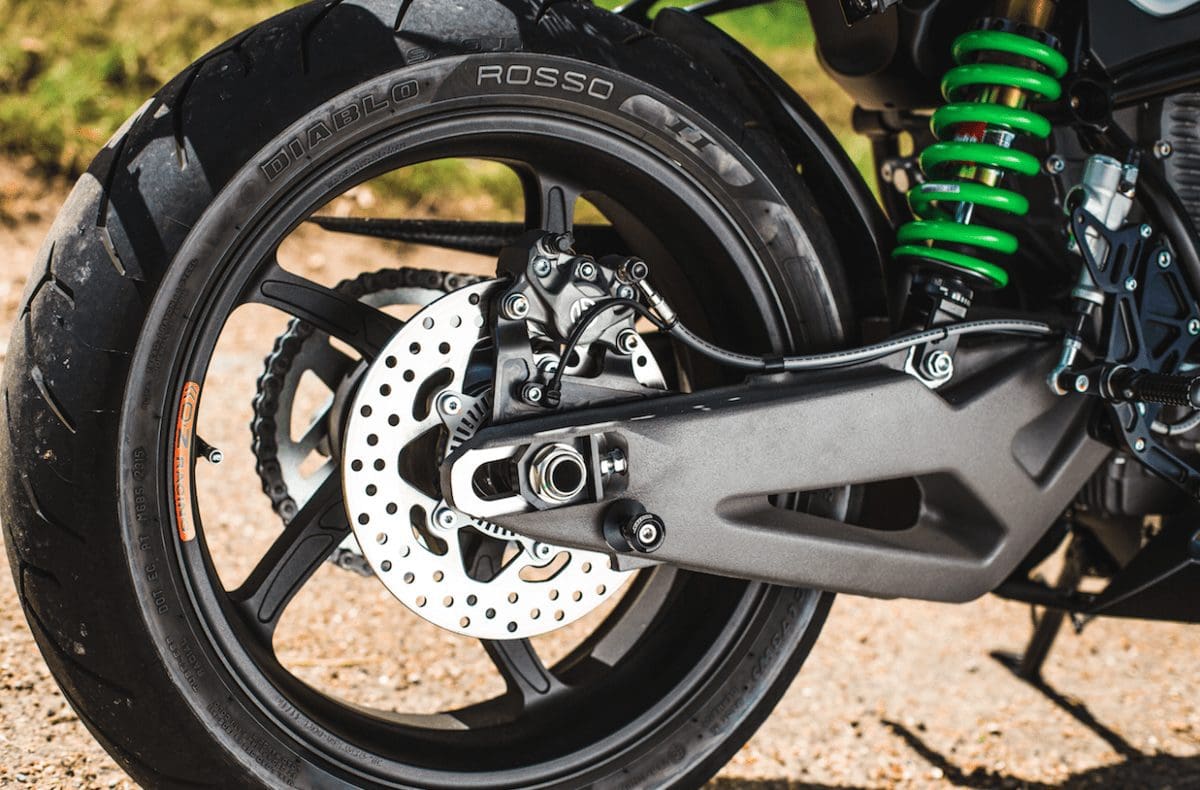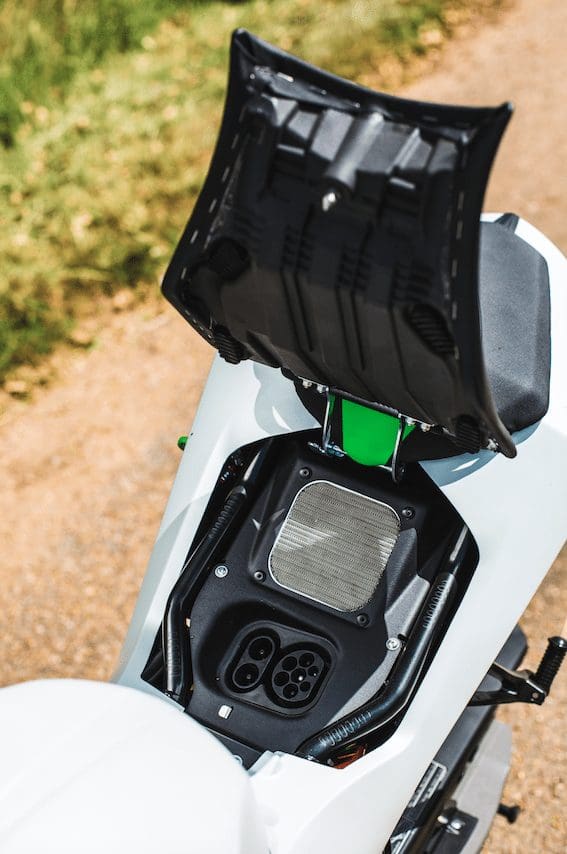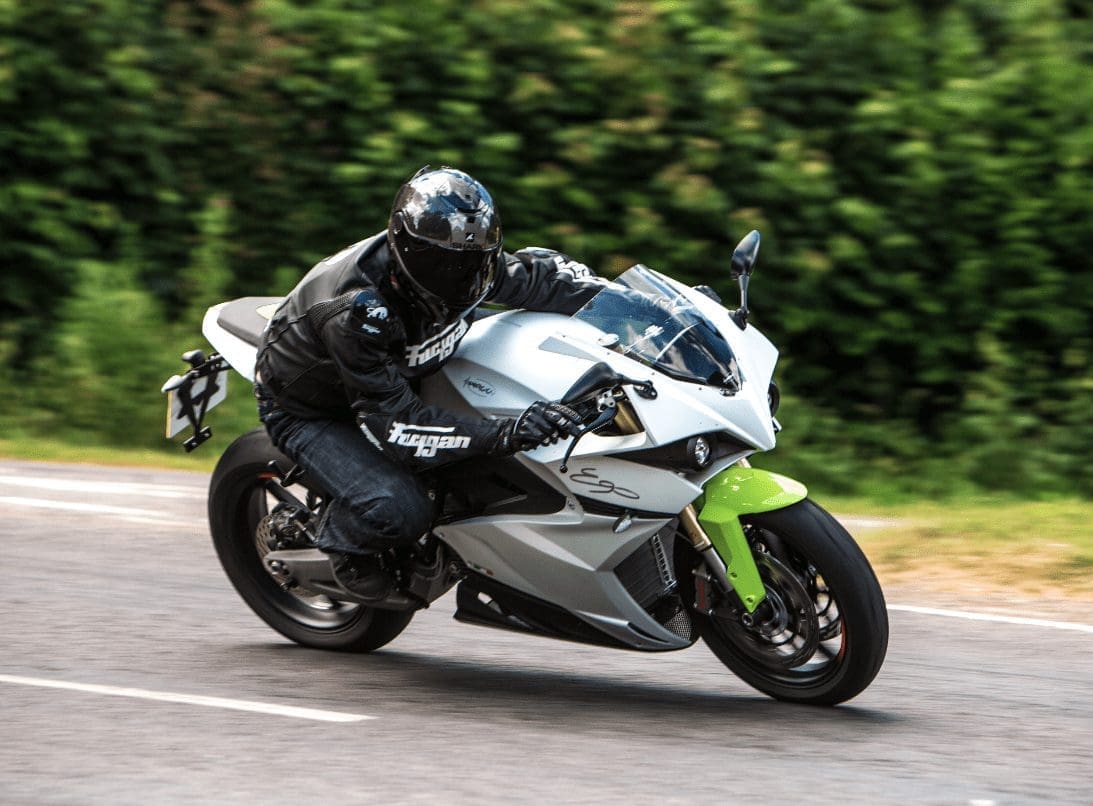Are electric bikes the future or an abomination? Can you have the same riding enjoyment when there is next to no engine noise and you don’t feel the pistons pumping life into the machine? Can they be cost effective? There are many questions that us ‘traditional’ riders ask when faced with electric bikes, but the one thing that it always comes down to at the end is range – and that’s what the biggest challenge was for testing the Energica Ego too.
WORDS: Mikko Nieminen, Motorcycle Sport & Leisure editor
PHOTOGRAPHY: Gary Chapman
I had charged the bike fully before setting off, and theoretically it should have been plain sailing as the bike’s spec sheet claimed 93 miles from a full charge. In the real world however, the dash told me there were 42 miles left in the ‘tank’. My journey home was 43.5 miles.
Given how unreliable range indicators are in traditional petrol bikes, I wasn’t too concerned. If I nursed the bike along at slow speeds, with the Eco mode selected, surely I would be able to extend the range enough to make it home. Only one way to find out…
Heavy fuel
To look at, the Ego looks much like a regular sportsbike, only a bit wider in the middle, and rather tall. The seat is at a lofty 875mm, and as you sit on the bike and move around you can feel its weight – the whole 281kg of it. Compared to modern petrol-powered bikes, which wear the bulk of their weight fairly low, the Ego feels quite top-heavy at standstill. To help move the bike around a car park there is a slow drive (both forward and reverse), which helps maneuvering at crowded car parks.
On closer inspection, the lack of a gear shift and a clutch lever indicate that this not like other bikes, but the biggest shock comes when you press the starter button – a green GO symbol lights up on the dash, and that’s it. There’s no sound, not a clunk nor a whirr, just that light on the dash. The synchronous oil-cooled motor with its permanent magnets is running and ready to unleash enough power to leave many other bikes in its dust, but apart from that one light it looks and sounds as dead as a dodo.
Twist ‘n’ go like hell
On the move, the Ego feels like riding a great big (and completely silent) twist ‘n’ go. Squeezing the twist grip delivers instant power to the back wheel and the heavy bike rolls down the road with ease.
In terms of comfort and riding position, the Ego feels much like a regular sports bike. The riding position is involved, with high foot pegs and a bit of weight on the wrists placed on the bike’s clip-on bars. It’s not bad by the standards of the class, but it’s not comfy.
Leaving the office I crawled through town and carefully approached the A-roads with the Eco mode switched on. This restricts torque level to 160Nm (from a max 195Nm) to preserve battery levels.
After about five miles of very conservative riding the range had shot up to 57 miles, so I promptly selected the Sport mode and silently left the rest of the traffic to trundle along at their sedate pace. Engaging the Sport mode gives you full power – and you can feel it! Acceleration feels more urgent and top speeds are better, but still restricted to 150mph. Maximum power is 136bhp (100kW), which isn’t mind-blowing given the bike’s weight issues, but it’s all about the torque, and there’s plenty of that. The curious thing with electric bikes is that they deliver the torque steadily from 0rpm right to the limit, giving you incredibly smooth and predictable acceleration. No power peaks or dips at all.
After about five miles on Sport mode and some rather sporty riding, the range was back down again, now showing 36 miles, so I selected the Standard mode and slowed down a bit.
Equipped to please
Riding slow I had time to experiment with the Ego’s settings. In addition to the ride modes (Eco, Standard, Sport and Wet) you can disable the ABS and select the level of regenerative engine braking to help keep the charge going a bit further.
Considering that the combined weight of the bike and rider (with no luggage) is in the region of 360kg, the suspension and brakes have their work cut out. The 43mm Marzocchi forks are fully adjustable, while the Bitubo rear mono-shock is rebound and preload adjustable. They do a fine job, and keep the bike stable through bumpy surfaces and hard cornering. The brakes are equally good, with four-piston, radially mounted Brembo calipers biting 330mm floating discs at the front and the same company’s two-piston caliper digging into a single 240mm disc at the rear. Overall, the chassis works much better than you’d expect from a heavy bike like this.
For the rest of the journey I kept switching between the ride modes, experimenting with power delivery and ensuring that I’d make it home without having to knock on someone’s door and ask to plug my bike in. When I finally arrived home I still had a generous 8 miles left according to the dash – I could have stayed in Sport mode a bit longer after all! In reality the remaining range was probably much more than that, and the battery level indicator is a better guide for range. I probably had another 20 sensible miles left.
How much?
The Ego is a very impressive bike in many respects, and once you get over the initial shock, it soon starts to feel natural to ride. But the range still needs to improve to make it feasible as anything other than a short-range missile. When the charge time from flat to full is 3.5 hours with a standard home charger and a real-world range with spirited riding closer to 60 miles than the maximum claimed 93 miles (which would require fairly conservative riding), it just won’t be able to do the miles that most people want from touring and even longer day and weekend rides. And then there’s the price: at £27,999 this is an expensive piece of kit even if its running costs are cheap (especially if you charge it at work). To put it in perspective, according to my amateur mathematics you could buy a Yamaha R1 (£15,799) and 10,609 litres of petrol (at £1.15/litre), equating to over 90,000 miles on the bike (based on claimed 39.2mpg), for the same money.
Putting the price to one side, the instant and consistent torque is addictive and the Ego is great fun. Definitely worth trying it for size if it fits you riding style and budget.
Specification
Energica Ego (2017)
Price: £27,999
Power: 136bhp (100kW)
Torque: 143.8lb-ft (195Nm)
Battery capacity: 11.7kWh
Tyres: Pirelli Diablo Rosso II (F) 120/70 ZR17, (R) 180/55 ZR17
Frame: Steel Tubular Trellis
Suspension: (F) Marzocchi 43 mm, fully adjustable, (R) Bitubo mono-shock adjustable rebound & preload
Final drive: Chain
Brakes: (F) Brembo 330mm double floating discs, 4-piston radial caliper, (R) Brembo 240mm single disc, 2-piston caliper
Weight: 281kg
Seat height: 875mm
Contact: www.motocorsa.co.uk

